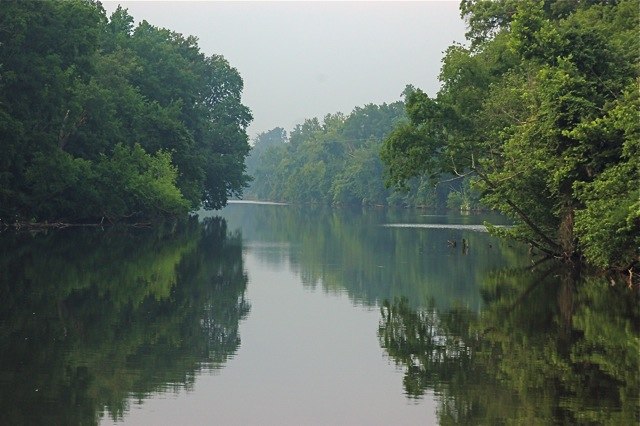The Haw River is a tributary of the Cape Fear River, approximately 110 mi (177 km) long, that is entirely contained in north central North Carolina in the United States. It was first documented as the "Hau River" by John Lawson, an English botanist, in his 1709 book "A New Voyage to Carolina." The name is shortened from Saxapahaw, from the Catawban /sak'yápha:/, "piedmont, foothill", from /sak/, "hill", plus /yápha:/, "step". The river gives its name to a small town that formed on its banks.
Convergence of the Haw River and Great Alamance Creek in Swepsonville, NC
The Haw River within Haw River State Park
The Haw River near Bynum
Bynum Dam
The Cape Fear River is a 191.08-mile-long blackwater river in east-central North Carolina. It flows into the Atlantic Ocean near Cape Fear, from which it takes its name. The river is formed at the confluence of the Haw River and the Deep River in the town of Moncure, North Carolina. Its river basin is the largest in the state: 9,149 sq mi.
The Cape Fear River at Smith Creek in Wilmington, NC.
The port in Wilmington on the Cape Fear River estuary
Lock and Dam No. 1 on the Cape Fear River in Bladen County
U.S. Coast Guard vessel on the Cape Fear, photographed from the USS North Carolina








